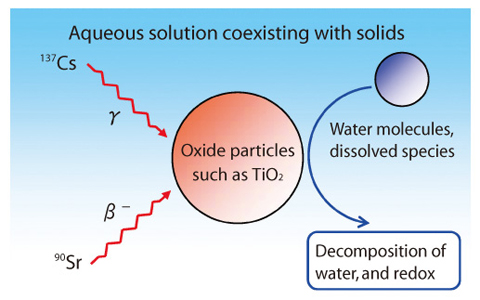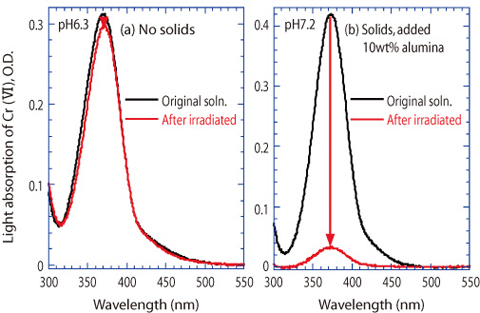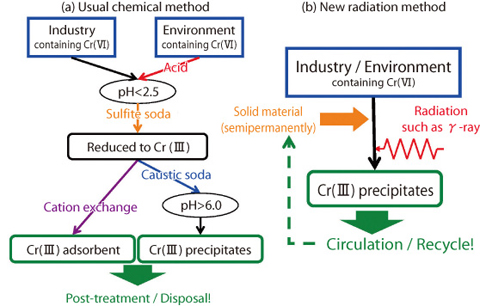
Fig.7-19 Promotion of reaction in aqueous solution by solids under irradiation

Fig.7-20 Absorption spectra of Cr(VI) ion in aqueous solution

Fig.7-21 Schematic diagram of non-toxic treatment
When a medium (liquid and gas) containing solids such as oxide particles is irradiated by radiations, chemical reactions of ions or molecules in the medium are sometimes promoted without the consumption of solids (Fig.7-19). We have applied this promotive effect to practical systems, and developed a novel method for non-toxic treatment of chromium(V), Cr(V). Cr(V) is so harmful to cause cancer, but is useful as industry for surface finishing of metal, production of colorants, etc. Its discharge to the environment must therefore be limited. To develop this method, we investigated how to treat Cr(V) using radiation instead of a large amount of chemicals, though in aqueous solution like industrial liquid wastes and environmental water, Cr(V) is hardly reduced by radiation.
Compared with the usual method, our novel one has several advantages: (1) Cr(V) concentration after treatment is reduced under the emissions standard, without using a large amount of the chemicals (Fig.7-20), (2) the treated chrome materials can be recycled usefully into fire-retardant bricks, catalysts etc. without discharge into the environment, and (3) easy operation and easy maintenance (Fig.7-21).
In order to further make the novel method fit for practical use, we are developing treatment technology of industrial wastes such as electroplating waste liquids and polluted soils, jointly with a local factory and with a corporation. Since the promotive effect is also effective for treatment of other heavy metals and organic compounds which are social issues, and for generation of hydrogen gas as a clean energy, we are simultaneously conducting R&D of these applications.
We require radiation sources for this novel method, and are now using cobalt-60 γ-ray and electron beams. We also expect to utilize high-level radioactive wastes as the sources in the near future. When this utilization is possible, a highly sustainable reaction process "for the waste by the waste" will be realized. We are also doing some investigations by using the practical radioactive wastes.
This work is a part of the results of the project "Search for Radiation-induced Catalysts and Clarification of Reaction Mechanism in the Heterogeneous Systems" given a Grants-in-Aid for Scientific Research (Kakenhi) by JSPS.